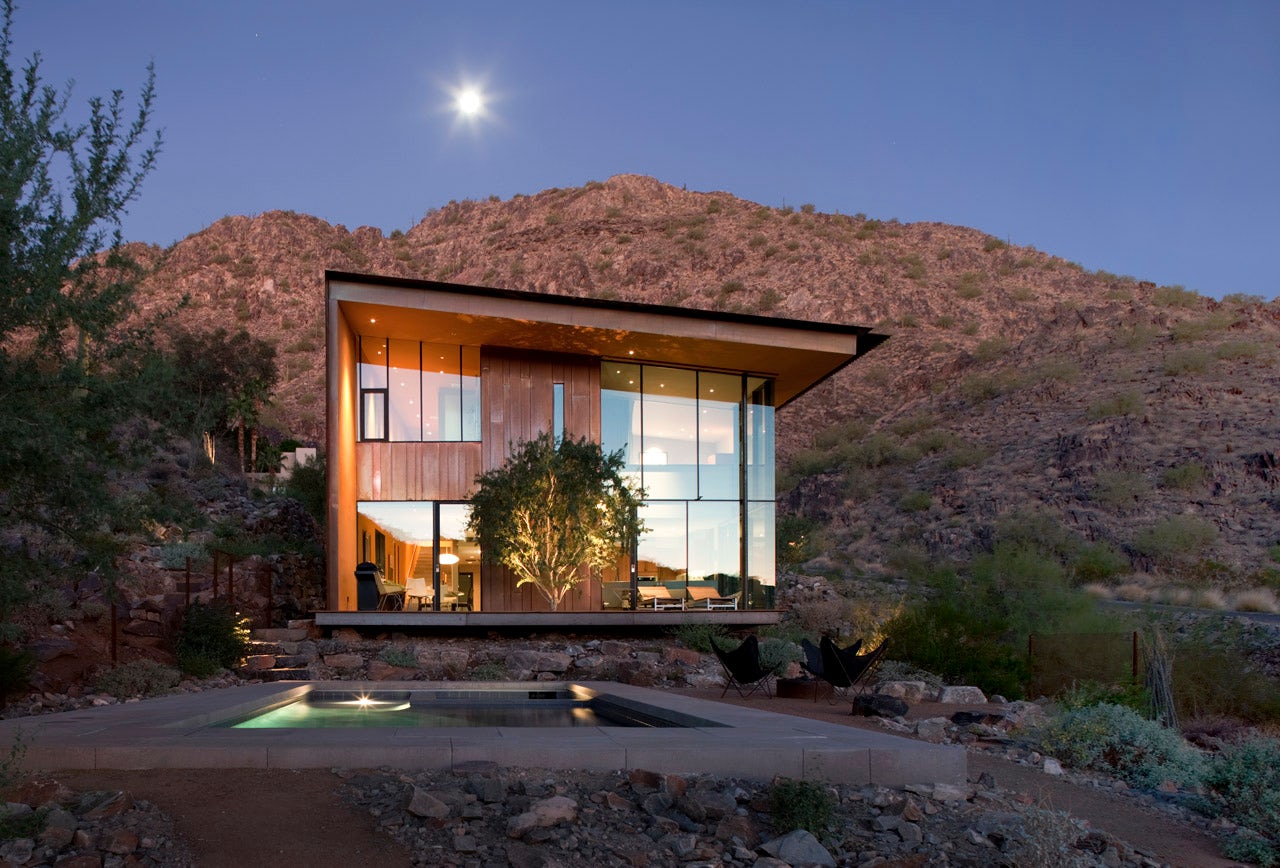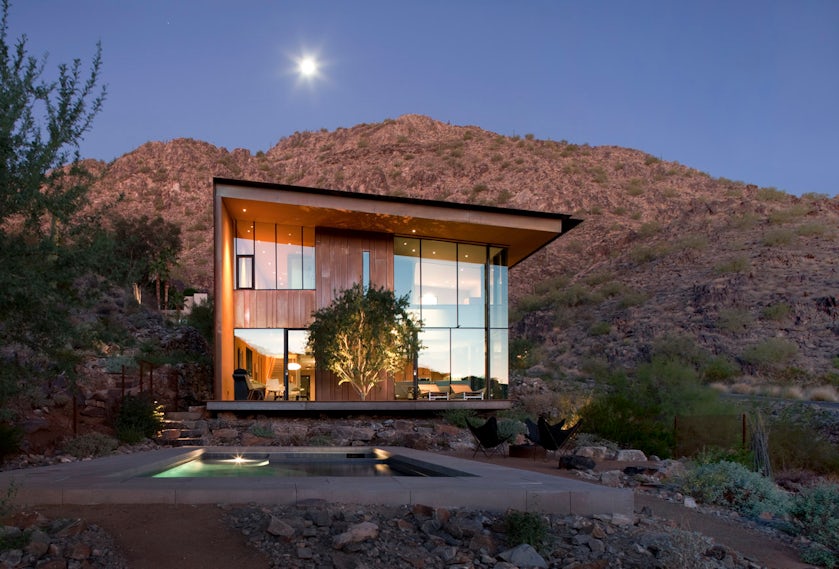The judging process for Architizer's 12th Annual A+Awards is now away. Subscribe to our Awards Newsletter to receive updates about Public Voting, and stay tuned for winners announcements later this spring.
The desert landscapes of Arizona are beautiful any time of the year with red and orange hues, and interesting rock formations spotted with desert plants. This landscape also comes with its challenges from extremely dry weather conditions, scarcity of natural resources such as water and extremely high heat. Through history, the regional architecture of Arizona was drawn from the Pueblos and its Spanish roots, where adobe, brick and concrete were primary materials used to combat the desert climate.
More modern architecture today is inspired by these elements that are not only suitable for the aridity but also blend together with the landscapes, creating sculptural homes that subtly make their marks in the desert. These inspirations are then juxtaposed with modern tools and sustainable design that allow architects to incorporate green building features into their desert homes, making them not only climate aware but also climate-efficient.
The following seven projects are examples of private residences across different desert areas of Arizona that weld the materiality of classic Southwestern architecture with a keen awareness of environmental design. From simple features like larger overhangs and strategic window placements to more complex strategies in material use, these modern homes make desert living not only beautiful, but more efficient and sustainable.


The Xero Residence by blank studio architecture, Superior, Ariz., United States
The exposed steel exterior allows this home to weather naturally and meld with the color of the surrounding desert hills. The narrow shape of the building that is cantilevered leaves a small footprint, allowing a large portion of the site to be retained for vegetation.

© Will Bruder Architects

© Will Bruder Architects

© Will Bruder Architects
Jarson Residence by Will Bruder Architects, Paradise Valley, Ariz., United States
This desert home that embraces the folds of the desert landscape is oriented towards the northeast for spectacular mountain views. Its simple roof hangs over weathering steel and copper forms to provide ample shade from the desert sun.

© DesignBuild Collaborative

© DesignBuild Collaborative
Santa Cruz County Residence by DesignBuild Collaborative, Santa Cruz County, Ariz., United States
The Santa Cruz County Residence is made of concrete and local stones that allows it to fit so seamlessly within its desert landscape. Layers of flat roof overhangs and variations in their design give beautiful moments of shade both inside and out of this home.

© Wendell Burnette Architects

© Wendell Burnette Architects

© Wendell Burnette Architects
Dialogue House by Wendell Burnette Architects, Phoenix, Ariz., United States
Composed of two volumes of heavy masonry, the Dialogue House is almost sculptural, nestled in the desert hills. The two volumes as well as the exterior circulation of this home creates multiple different frames of the surrounding landscape.

© DesignBuild Collaborative

© DesignBuild Collaborative

© DesignBuild Collaborative
Rincon Mountain Residence by DesignBuild Collaborative, Ariz., United States
The Rincon Mountain Residence sits low in order to blend with its surroundings. The generous use of solar panels harvest energies that heat water and generate electricity for the entire home.

© Ibarra Rosano Design Architects

© Ibarra Rosano Design Architects
Levin Residence by Ibarra Rosano Design Architects, Marana, Ariz., United States
The multitude of rectilinear frames in the Levin Residence created by walls, seamless windows and courtyards shape multiple vantage points to view the desert landscape. The materiality is a tasteful blend of steel, wood and stone that harmonizes with the gravel and desert vegetation.

© Wendell Burnette Architects

© Wendell Burnette Architects

© Wendell Burnette Architects

© Wendell Burnette Architects
Desert Courtyard House by Wendell Burnette Architects, Scottsdale, Ariz., United States
The architects of this desert home play around with the idea of privacy and visibility using a wide range of both traditional and new materials for this region. The Desert Courtyard House is a volumetric façade of weathered metal with a small entrance that leads you to the courtyard where the desert landscape is brought inside. As you move through this home you begin to discover new openings and views as well as a more gentle materiality.
The judging process for Architizer's 12th Annual A+Awards is now away. Subscribe to our Awards Newsletter to receive updates about Public Voting, and stay tuned for winners announcements later this spring.









